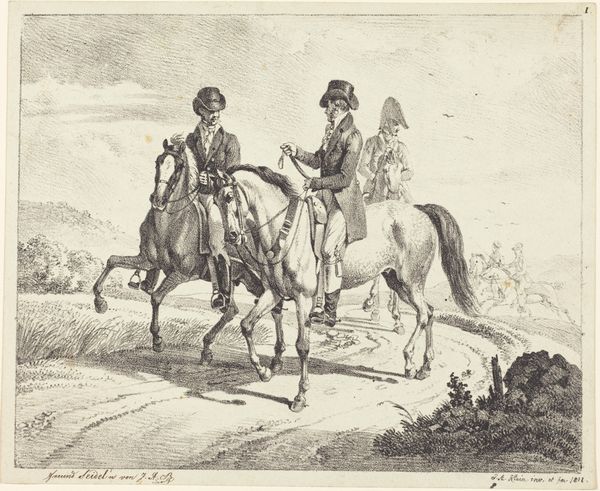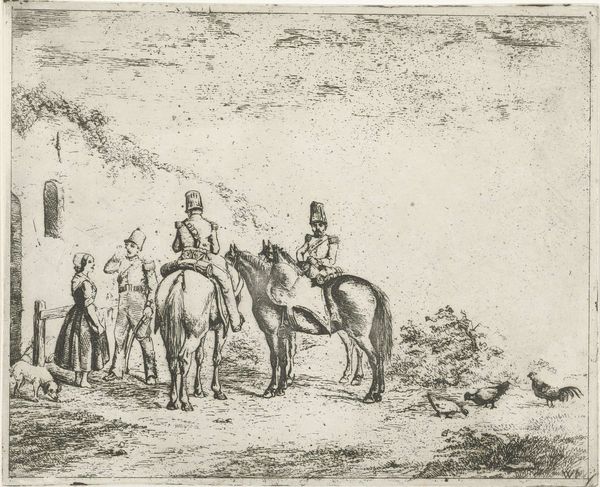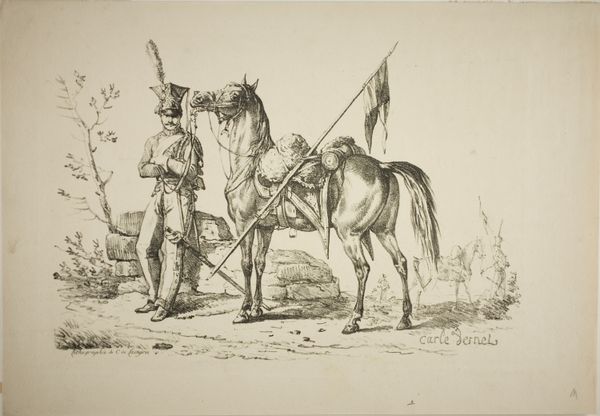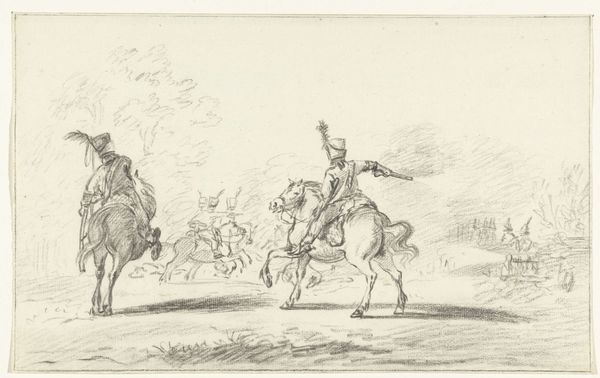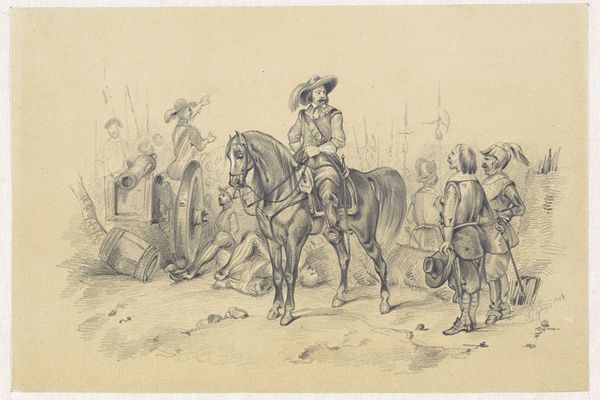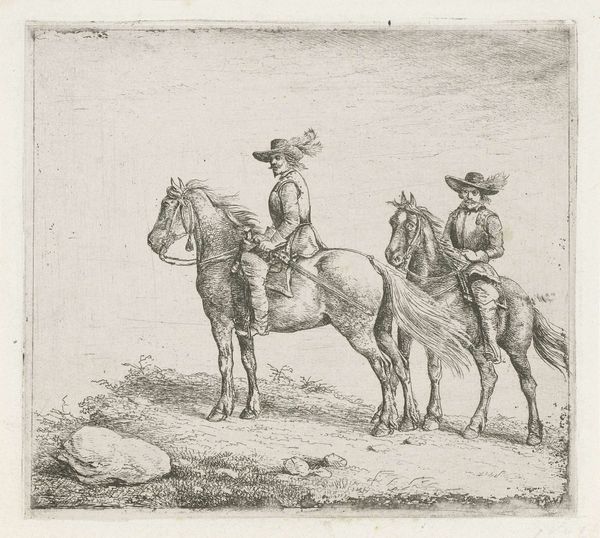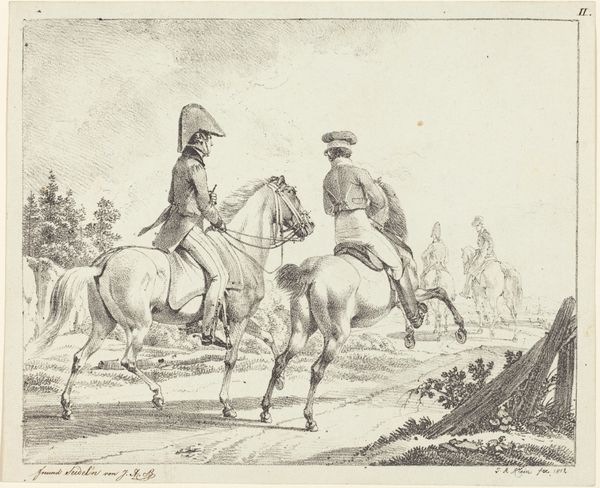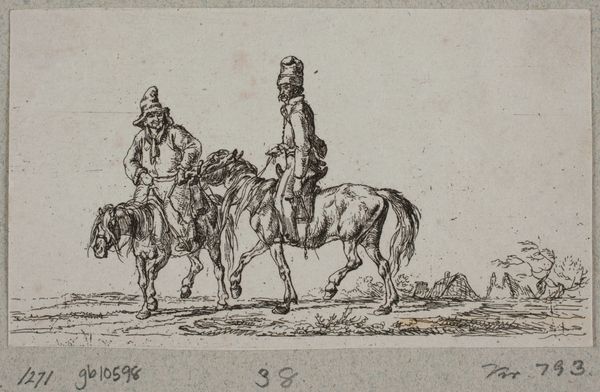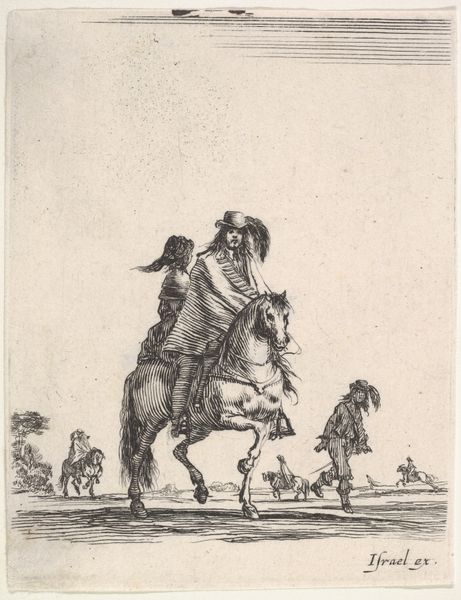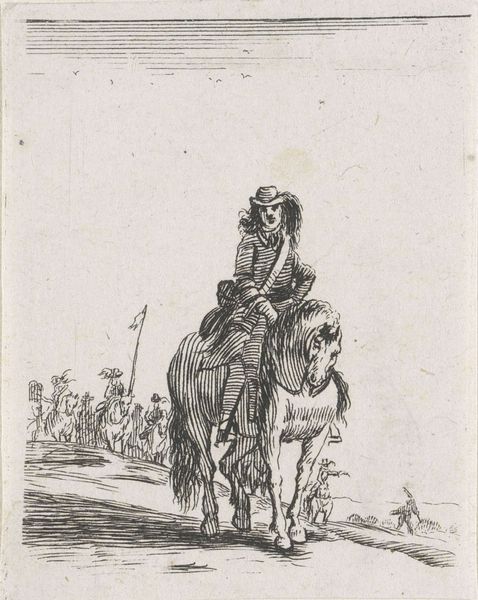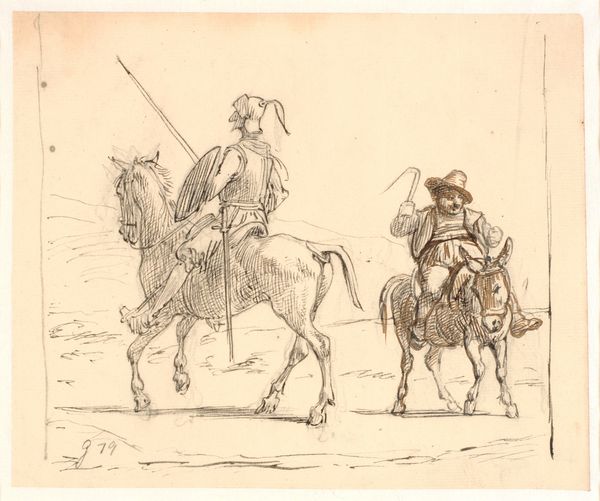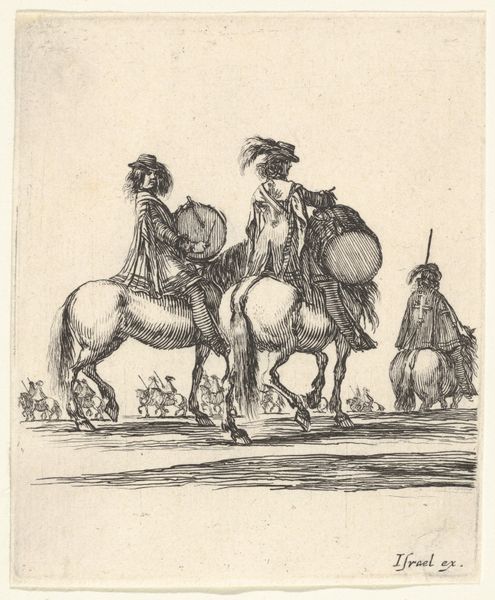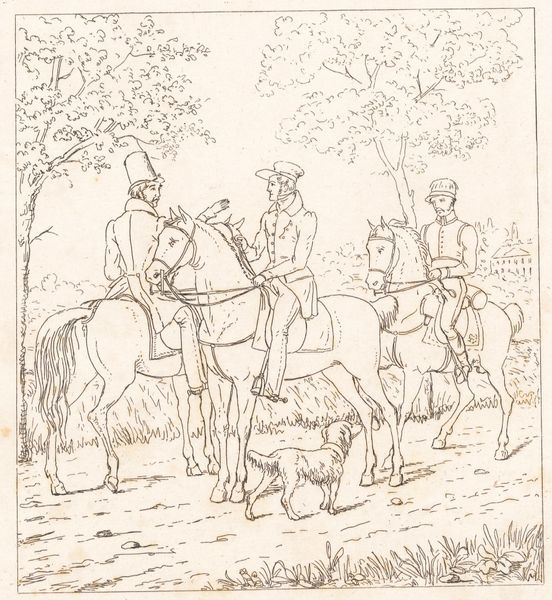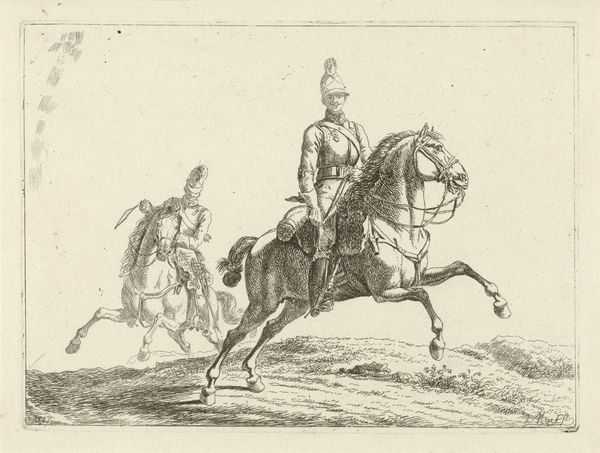
drawing, ink, pen
#
portrait
#
drawing
#
neoclacissism
#
pen illustration
#
landscape
#
figuration
#
ink
#
horse
#
pen
#
history-painting
Dimensions: height 173 mm, width 216 mm
Copyright: Rijks Museum: Open Domain
Editor: Here we have "Two French Cavalrymen on Horseback," a pen and ink drawing by Johannes Vinkeles, created around 1802. There’s a sense of poised observation about it, almost like a quick sketch capturing a moment of military life. What jumps out at you in this drawing? Curator: It’s interesting you call it a quick sketch. While seemingly casual, works like this participated in shaping a specific image of military authority. Consider the socio-political climate of the early 19th century. Napoleon’s rise heavily influenced the iconography of power. How do you think this drawing contributes to, or perhaps subverts, the romanticism surrounding military figures at the time? Editor: I hadn't thought about that! The Neoclassical style, I guess, does lend a certain idealization, but the relative simplicity of the lines feels more reportage than grand statement. Curator: Exactly, and that’s key! It exists in the space between documentation and idealized portraiture. Vinkeles was Dutch, creating this work while his country was under French influence. Might the apparent casualness be a way of navigating the politics of representation, avoiding overtly glorifying the occupying force while still acknowledging their presence and power? How else might an artist negotiate representing a potentially fraught political situation? Editor: So the very act of choosing this subject, these figures, even if seemingly passively observed, becomes a political statement? I see what you mean! It shows how deeply enmeshed art is with power structures, even something as simple as a drawing of soldiers. Curator: Precisely. This work illuminates how even seemingly straightforward depictions are laden with the complexities of social and political power dynamics, requiring us to consider context alongside aesthetics. Editor: I’ll definitely look at art with a broader, more questioning eye now, considering how history shapes the image. Thank you!
Comments
No comments
Be the first to comment and join the conversation on the ultimate creative platform.
